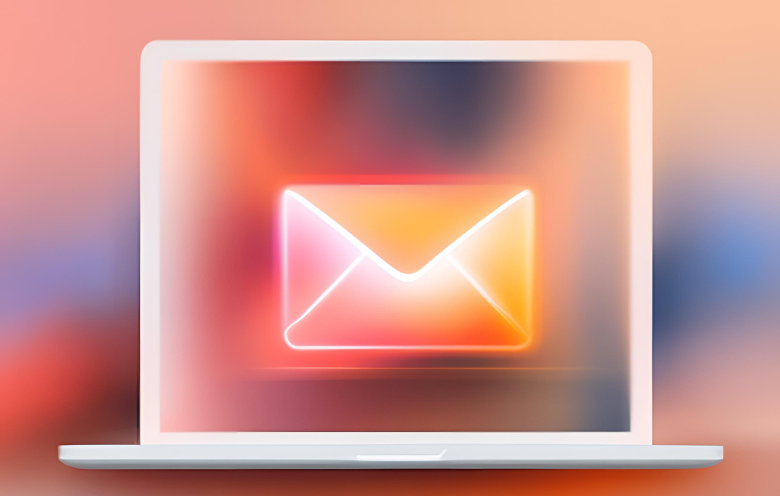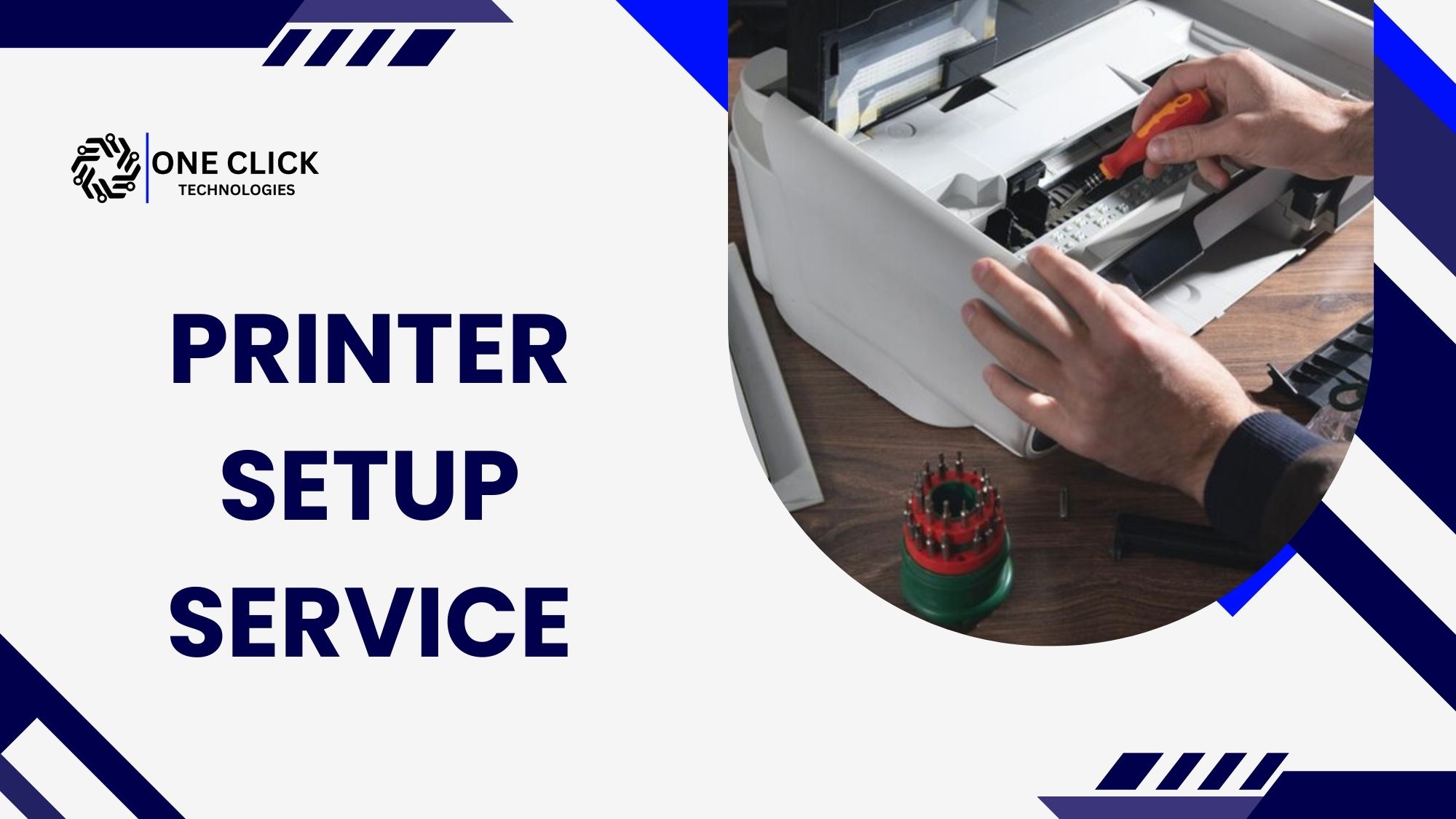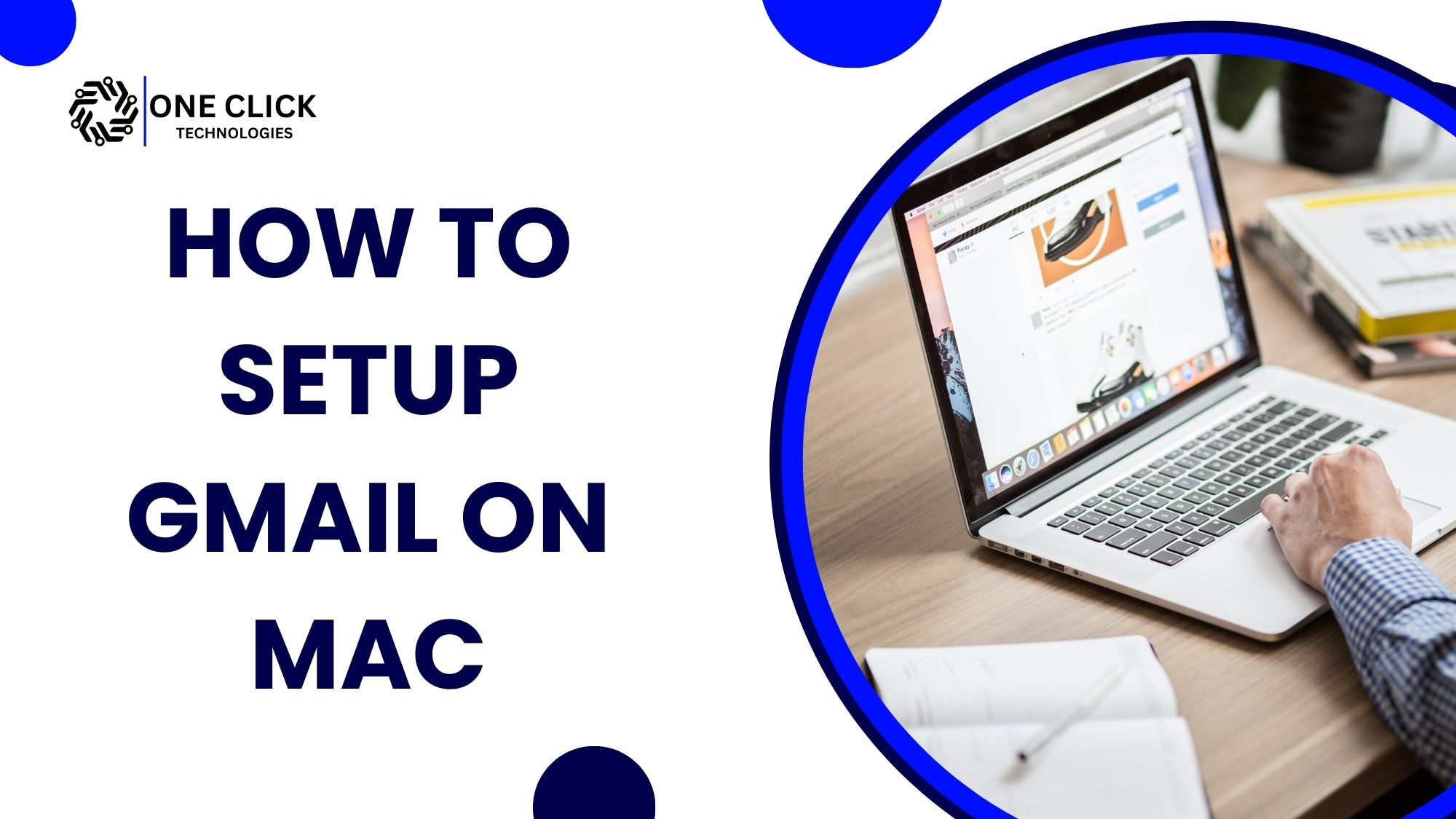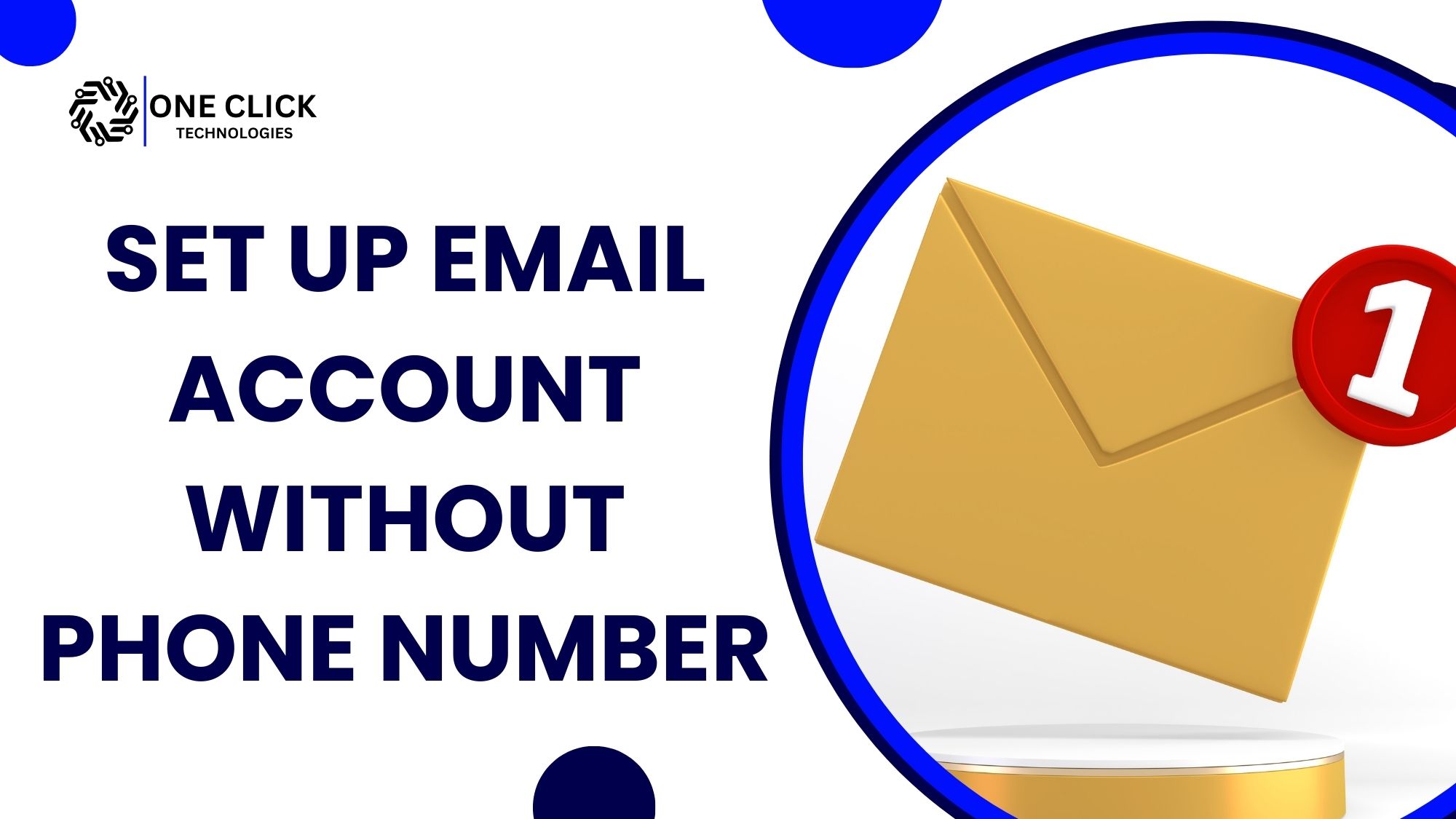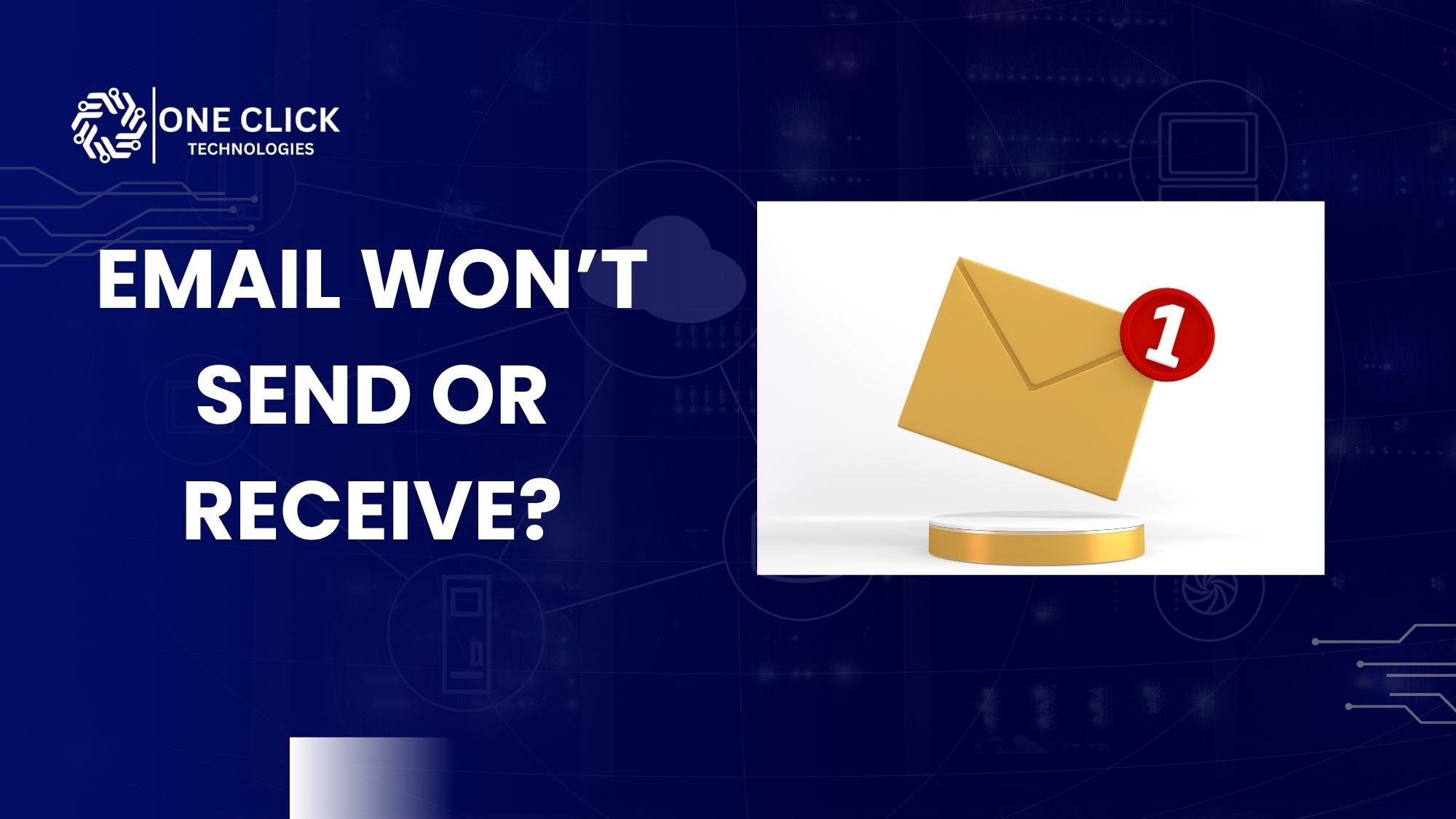Table of Contents
Having an email account has become essential for communication, managing important documents, and accessing various online services. It serves as your online identity, making it a fundamental tool in the digital age. Whether you’re a complete beginner or need a quick refresher, this step-by-step guide will walk you through the process of setting up an email account easily and securely.
We’ll explore the different types of email providers, tips for choosing the right one, and detailed instructions for setting up your account on various devices. By the end of this tutorial, you’ll be well-equipped to set up and manage your email effectively. For those seeking professional assistance, remote online services by OneClick Technologies LLC offer expert support for a seamless setup experience.
What is an Email Account?
An email account is a digital mailbox that allows you to send, receive, and store electronic messages. It is used for personal communication, business correspondence, accessing online services, and more. Essentially, it serves as your address in the digital world, enabling you to stay connected with others and manage essential information.
Why You Need an Email Account
Having an email account is essential as it allows you to communicate, sign up for services, manage work tasks, and securely access online platforms.
An email account is much more than a way to send and receive messages. Here’s why setting one up is important:
- ✅ Digital Communication – Stay connected with family, friends, and coworkers.
- ✅ Online Registrations – Use email to sign up for services, banking, shopping, or streaming.
- ✅ Cloud Access – Services like Google Drive, OneDrive, and Dropbox require email logins.
- ✅ Work & Business – Employers, clients, and customers rely on email for professional communication.
Types of Email Accounts
There are various types of email accounts available, with the most common being:
- Personal Email Accounts: These are free accounts provided by popular email service providers. They are widely used for everyday communication and come with standard features such as email storage, contact lists, and spam filters.
- Business Email Accounts: Business email accounts are linked to a company’s domain name. They convey professionalism and are often used by organizations to communicate with clients and employees.
- Hosted Email Accounts: These accounts are managed by third-party companies that provide additional security and support. They are often used by businesses that require enhanced security features.
Advantages of Having an Email Account
- Convenience: Allows for instant communication and easy access to information.
- Organization: Helps in managing tasks, appointments, and documents.
- Access to Services: Required for signing up for social media, online banking, and other services.
- Professionalism: Essential for business communications and formal interactions.
Preparing for Setup
Before creating your email account, it’s important to take some preparatory steps:
Choosing an Email Provider
Several email providers offer free and paid accounts, each with distinct features. When selecting a provider, consider the following factors:
- Security: Look for providers with robust security measures like spam filters and two-factor authentication.
- User Interface: Choose a provider with a user-friendly interface.
- Storage Capacity: Some providers offer more storage for free accounts than others.
- Integration with Other Services: If you use other services like cloud storage or productivity tools, choose a provider that integrates well.
Read: Struggling with Zoom, Chrome, or Email? Remote Online Computer Repairs Can Fix App Issues in Minutes
Creating a Strong Password
A secure password is crucial for protecting your account from unauthorized access. Here are some tips:
- Use at least 12 characters: Include a combination of uppercase and lowercase letters, numbers, and special characters.
- Avoid common words or sequences: Don’t use easily guessed information like your name or birthdate.
- Change passwords regularly: Regular updates improve security.
- Enable two-factor authentication: Adds an extra layer of security.
Step 1: Setting Up a Gmail Account on the Desktop
Gmail is one of the most popular email services due to its ease of use and integration with other Google services. Here’s how to set up a Gmail account on a desktop computer:
Visit Gmail’s Website
- Open a web browser and go to the Gmail homepage.
- Click on the “Create account” option.
Fill in Your Information
- Enter your first and last name in the provided fields.
- Choose a username for your email address
- Create a strong password and confirm it.
Verify Your Phone Number
- Enter a valid phone number to receive a verification code via text.
- Enter the code when prompted to verify your identity. This step helps in account recovery and securing your account.
Accept Terms of Service
- Read through Google’s Terms of Service and Privacy Policy.
- Click “I agree” to proceed.
Personalize Your Account
- Add a profile picture, if desired.
- Customize your settings, such as language preference and inbox layout.
Sign In
- Once your account is set up, return to the Gmail homepage and sign in with your new email address and password.
- Start sending and receiving emails right away.
Step 2: Setting Up a Gmail Account on Mobile
Setting up an email account on a mobile is convenient, especially if you frequently use your smartphone for communication. Here’s how to set up a Gmail account on an Android or iOS device.
Open the Gmail App
- Download the Gmail app from the Google Play Store (Android) or the App Store (iOS) if you haven’t already.
- Open the app and tap “Add account.”
Add Account
- Tap “Google” to select Google as your provider.
- Tap “Create account” and choose “For myself.”
Create an Email Address and Password
- Enter your name, desired username, and password.
- Tap “Next” to proceed through the prompts.
Verify Your Phone Number
- Enter your phone number and verify it using the code sent via text.
Set Up Your Account
- Configure account settings, such as notification preferences.
- Personalize your account by adding a profile picture.
Accept Terms of Service
- Read and agree to Google’s terms to finalize the setup.
Step 3: Setting Up Email on iPhone/iPad
Apple devices support various email providers, making it easy to set up an account using the built-in Mail app.
Go to Settings > Mail > Accounts
- On your iPhone or iPad, open the Settings app.
- Tap “Mail,” then select “Accounts” > “Add Account.”
Automatic Setup for Common Providers
- If you’re adding a common email provider like Gmail, Yahoo, or Outlook, select the provider’s name and enter your email address and password.
- Follow the on-screen instructions to complete the setup.
Manual Setup for Other Providers
- For lesser-known providers, select “Other” > “Add Mail Account.”
- Enter your name, email address, password, and a description.
- Configure the incoming and outgoing mail server settings, which can be obtained from your email provider.
Read: Set Up Email for Business: A Step-by-Step Guide
Steps to Create a New Email Account
Let’s walk through the process of creating a new email account using Gmail, Outlook, and Yahoo.
✅ How to Create a Gmail Account (Google)
To create a Gmail account, go to gmail.com, click “Create account”, enter your details, verify with phone/email, and confirm to start using it.
Gmail is the most popular email provider worldwide.
- Go to www.gmail.com.
- Click “Create account.”
- Choose “For myself” or “For work/business.”
- Fill in your first name, last name, username, and password.
- Example email:
[email protected]
- Example email:
- Enter your phone number (for verification and recovery).
- Add a recovery email (optional but recommended).
- Agree to Google’s terms and click “Next.”
Your Gmail account is now ready!
Read: Email Won’t Send or Receive? We Fix Broken Accounts, Restore Access & Recover Lost Emails Fast
✅ How to Create an Outlook Account (Microsoft)
To create an Outlook account, go to outlook.com, click “Create Free Account”, choose a username, set a password, enter your details, and verify.
Outlook is popular for professional and business use.
- Visit outlook.com.
- Click “Create Free Account.”
- Choose your username → you’ll get an address like
[email protected]. - Create a strong password.
- Enter your personal details (name, country, date of birth).
- Verify your identity with a phone number or security code.
Your Outlook account is now active.
Read: Email Setup for iPhone Not Working? Do This Before You Give Up
✅ How to Create a Yahoo Mail Account
To create a Yahoo Mail account, go to mail.yahoo.com, click “Sign Up”, enter your details, verify your phone number, and complete registration.
Yahoo offers generous storage and is still used by millions worldwide.
- Go to mail.yahoo.com.
- Click “Sign Up.”
- Enter your full name, username, and password.
- Provide a phone number for verification.
- Click “Continue” and complete the verification process.
Your Yahoo Mail account is set up!
How to Fix Common Email Account Setup Problems
You can fix common email account setup problems by using a unique username, creating a strong password, verifying with the correct phone/email, and updating recovery options.
Setting up an email account is generally straightforward, but some common issues may arise:
Incorrect Password Errors
- Double-check your password for accuracy.
- Reset your password if necessary via the email provider’s password recovery options.
Issues with Verification Codes
- Make sure you’re entering the code within the time limit.
- Verify that your phone number is correct.
- Request a new code if needed.
Problems Accessing the New Account
- Verify your internet connection.
- Ensure that your email app or browser is up to date.
- Clear your browser cache or restart your app.
Read: Set Up Email Signature on Outlook (Mobile + Desktop) – The Ultimate Guide
Best Practices for Managing Your Email Account Effectively
Once your email is set up, keeping it organized is crucial:
Tips for Keeping Your Inbox Organized
- Create Folders/Labels: Categorize emails into folders such as “Work,” “Personal,” or “Important.”
- Archive or Delete Unneeded Emails: Reduce clutter by regularly cleaning out your inbox.
- Set Up Filters: Automatically sort incoming emails based on sender or subject.
Importance of Regular Password Updates
- Change your password every 3-6 months.
- Use a password manager to keep track of changes.
Utilizing Security Features
- Enable Two-Factor Authentication: Adds a layer of security to your account.
- Monitor Account Activity: Review login locations to spot suspicious activity.
Why Choose Remote IT Support for Your Email Setup Needs?
Remote IT support services can simplify the process of setting up an email account:
Advantages of Seeking Online Support for Tech Issues
- Convenience: Get help without needing an in-person appointment.
- Quick Resolution: Online support can resolve issues in real time.
How Remote Assistance Can Streamline the Setup Process
- Expert Guidance: Avoid common pitfalls and technical errors.
- Personalized Solutions: Tailored advice based on your specific needs.
The Role of Professional IT Services in Ensuring Secure Configurations
Remote IT professionals can help set up security features such as encryption, two-factor authentication, and recovery options to keep your email account secure.
Conclusion
Setting up an email account doesn’t have to be complicated. With this step-by-step guide, you can create an account on a desktop, mobile device, or iPhone/iPad with ease. For beginners who might encounter technical challenges or need further assistance, OneClick Technologies LLC offers reliable online IT support to ensure a seamless email setup experience. Whether it’s configuring security features or troubleshooting common issues, reach out to OneClick Technologies LLC for expert help in all your email-related needs.
Embrace the digital age confidently with a well-set-up email account and explore all the benefits of professional remote IT support.
FAQs
Q1: How do I create an email account without a phone number?
A: Some providers allow alternate email verification instead of phone numbers.
Q2: Can I have multiple email accounts?
A: Yes—you can create unlimited accounts across providers.
Q3: Which is the best email provider?
A: Gmail for general use, Outlook for business, Yahoo for large storage.
Q4: How long does it take to set up an email account?
A: Less than 5 minutes for most providers.
Q5: Can I create a professional email like [email protected]?
A: Yes—use G Suite (Google Workspace) or Microsoft 365 for branded emails.

